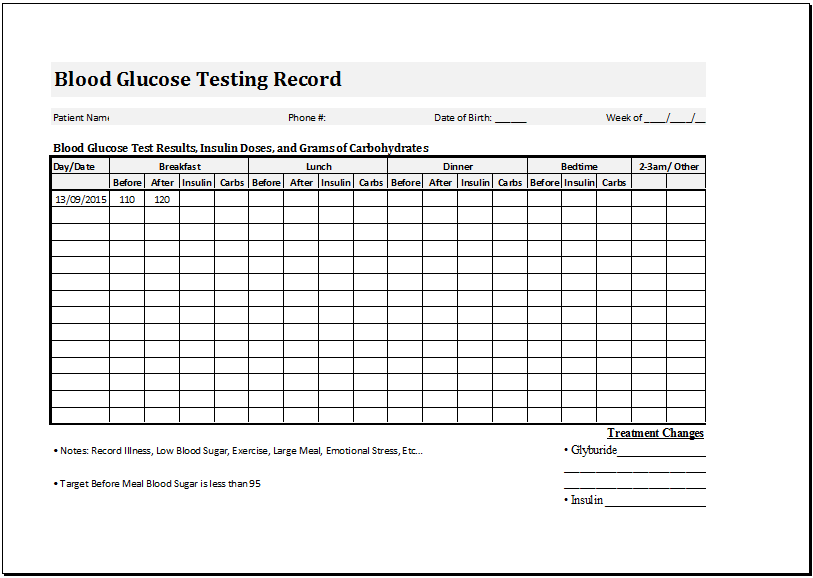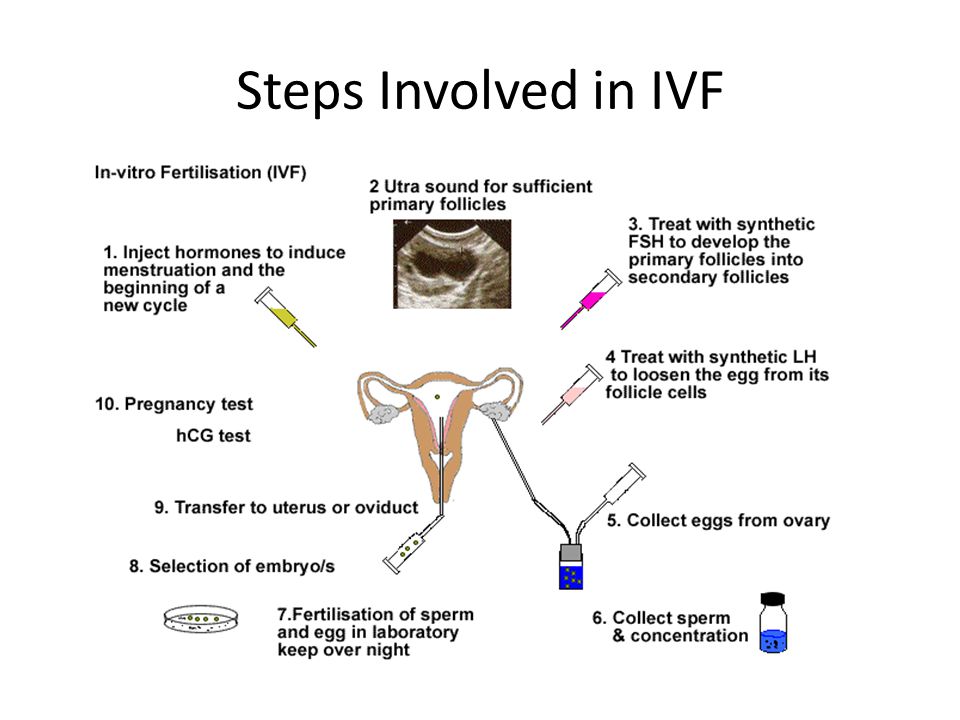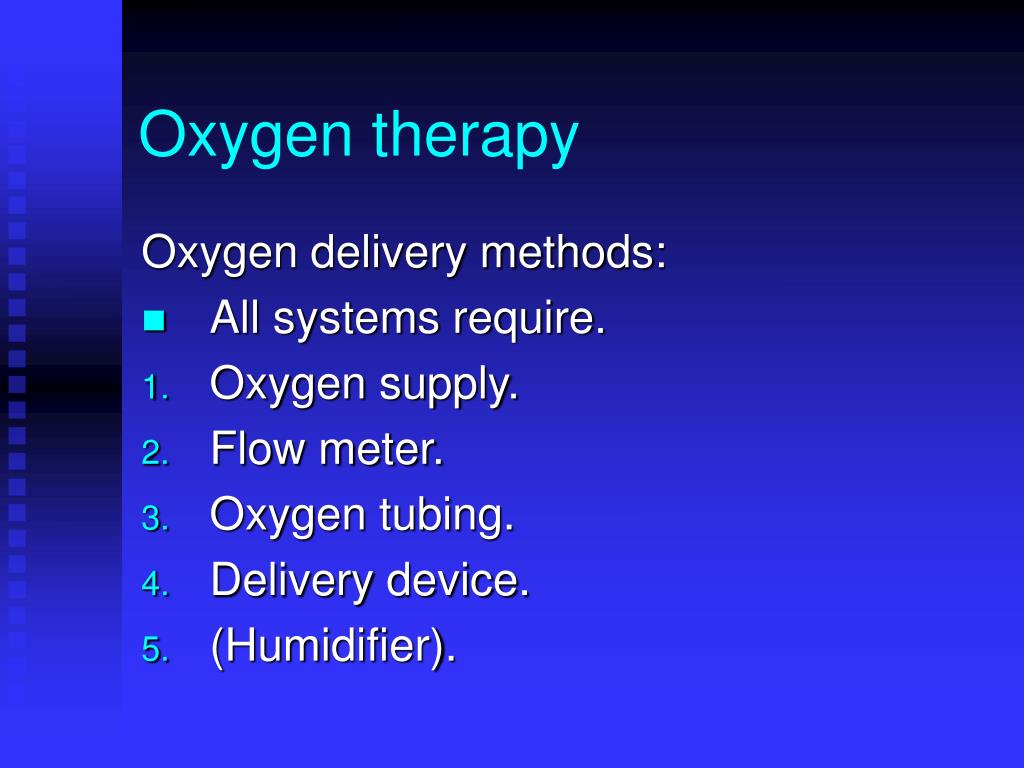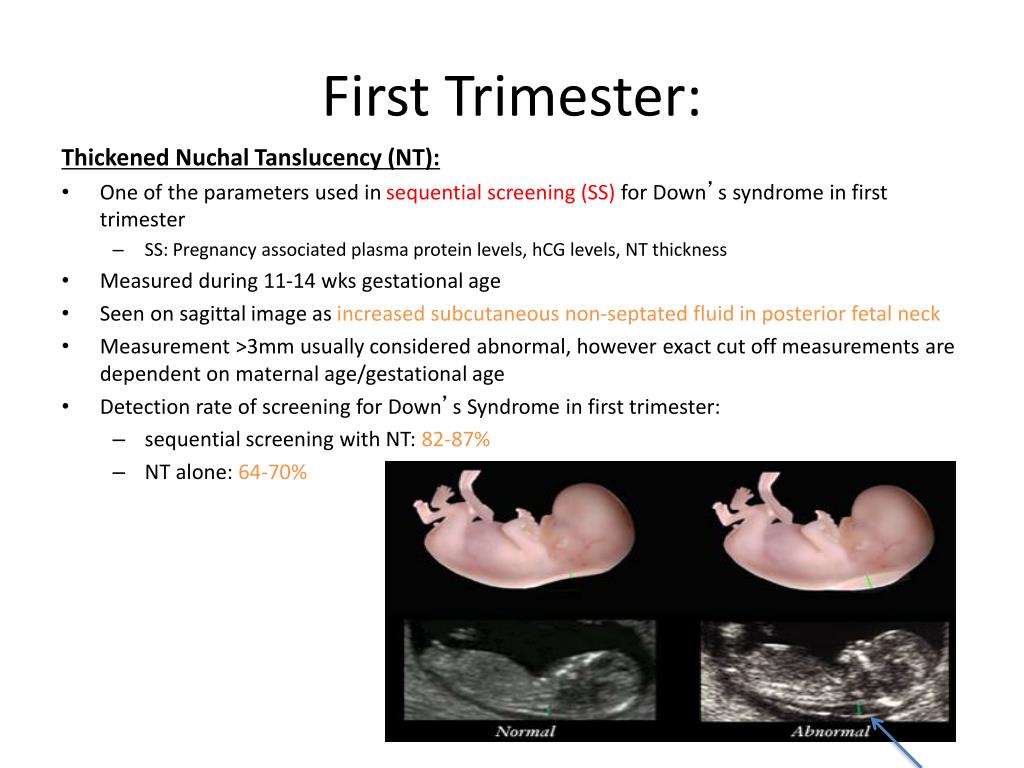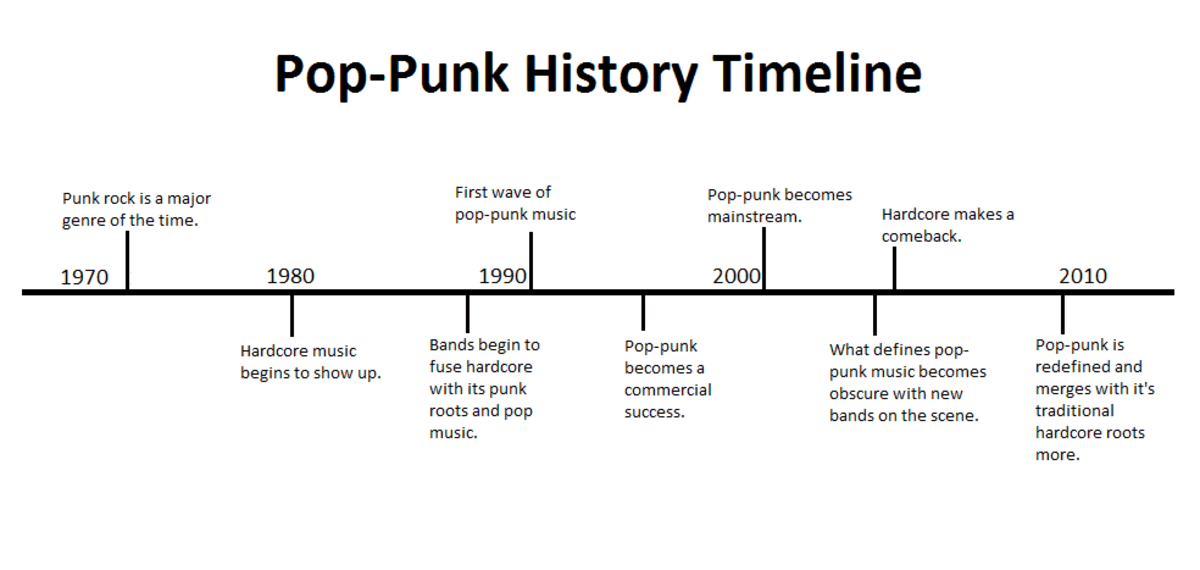How to make your child improve handwriting
How to Improve Handwriting with Kids
You are here: Home / How to Improve Handwriting Skills with Kids
Like what you read? Share it!
12.4K shares
Handwriting skills are an important developmental task and activity for kids. Through handwriting, they are able to express themselves and communicate with the world around them. Improving their penmanship, legibility, pencil grasp, and working on problem areas are all important things that need to be addressed, whether you are a homeschool parent, teacher, therapist, or just supplementing your child's classroom activities.
I wanted to share some ways on how to improve handwriting skills with kids and have rounded up all the posts I have written on this topic here on GHOK.
How to Improve Handwriting Skills with Kids
The first step in learning about handwriting skills is to understand the importance of fine motor development and how pencil grasp develops. Here are some posts I have written on that topic:
- Typical Fine Motor Developmental Milestones for Ages 0-6 – Also comes with a free printable of each age level.
- You can also find more information on fine motor skill development.
- Which Fine Motor Skills Are Important for Handwriting?
Pencil Grasp Development
There are two types of pencil grasps that are considered efficient for handwriting; the tripod and the quadruped grasp. You can learn more about those two types of grasp below.
- Proper Pencil Grasp for Writing – Comes with a step by step developmental sequence and explanation as well as pictures of each type of grasp.
- 5 Tips for Pencil Grasp Development with Preschoolers – This is a guest post I wrote over on Learning 2 Walk about pencil grasp as well.
- Pencil Grasp Development Handout – Free Download
- What is Pincer Grasp? – Pincer grasp is an important part of handwriting skills and pencil grasp.
- The Foundational Skills Needed for Handwriting Mechanics – a look at underlying skills needed for pencil grasp.
- 5 Fine Motor Activities to Improve Pencil Grasp – Guest post on Learning 2 Walk
- 2 Pincer Grasp Fine Motor Activities for Toddlers
- 5 Activities for Pincer Grasp Development
- 15 Hands-On Activities to Promote Pincer Grasp
Pre-Writing Skills for Toddlers and Preschoolers
Pre-writing skills are the pre-cursor to handwriting.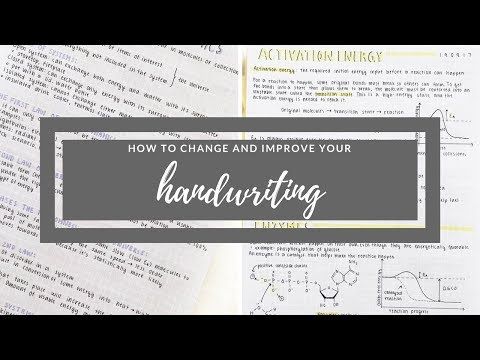 They consist of an age-appropriate sequence of lines and shapes that toddlers and preschoolers learn in order to, later on, form letters and numbers.
They consist of an age-appropriate sequence of lines and shapes that toddlers and preschoolers learn in order to, later on, form letters and numbers.
- 6 Pre-writing Activities for Preschoolers – This was a 6-week series I did on my blog with activities to encourage pre-writing lines and shapes.
- 12 Fun Ways to Practice Handwriting with Preschoolers – Hands-on ideas for practice handwriting and pre-writing skills
- 10 Hands-On Ways to Practice Pre-Writing Lines
- On The Farm Prewriting Packet
Basic Shapes for Beginners – A Hands-on Approach to Pre-writing Strokes for Kids is an ebook I wrote to get you started with pre-writing skills at home for ages 2-5.
Teaching Handwriting Skills at Home
If your child is in Occupational Therapy it is important to practice the skills they are working on at home. This post discusses some ways to do that.
Activities to Practice Handwriting Skills at Home
For homeschoolers, I have a special series on my site with how to teach handwriting to your preschooler through elementary age student.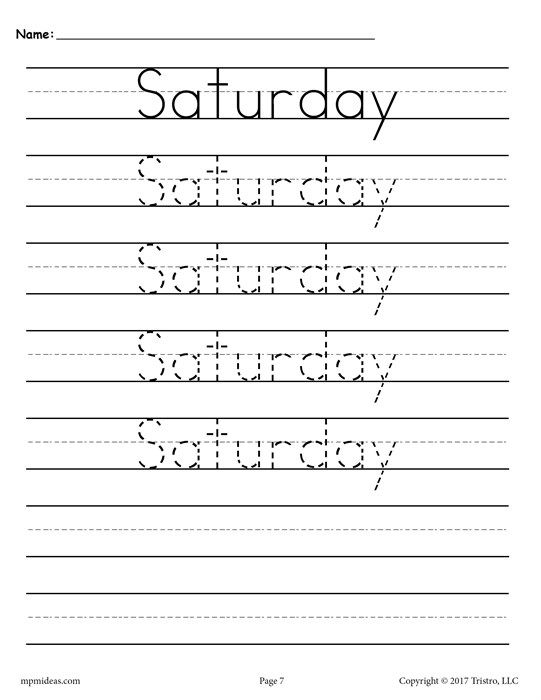
- Teaching Handwriting in Your Homeschool – Preschool
- Teaching Handwriting in Your Homeschool – Kindergarten
- Teaching Handwriting in Your Homeschool – Elementary
- How to Include Handwriting in your Tot-School & Preschool
Teaching Cursive Handwriting
Cursive can be a great alternative for children who are struggling with print. Plus it's important to at least teach your child how to sign their name in cursive. Here are some cursive resources for you.
- Should I Teach Cursive or Print Handwriting First?
- Cursive Pre-Writing Lines & Strokes – Free Printable
- Is Cursive Handwriting Still Important to Learn?
Handwriting Difficulty Tips & Tricks
You've most likely come to this page because your child is struggling with handwriting in some way. Here are some tips for some common handwriting problems.
- 5 Tips to Correct Your Child's Pencil Grasp
- How to Fix Poor Spacing in Handwriting
- How to Fix Poor Letter Formations in Handwriting
- How to Stop Letter Reversals in Handwriting
More Handwriting Resources
- 5 Benefits of a Slant Writing Board
- Handwriting Warm Up Activities
- DIY Handwriting Toolkit
- 5 Mistakes to Avoid When Introducing Handwriting to Kids
- The Handwriting Book
For more tips and ideas, you can sign up to receive my 5 days of handwriting and pre-writing skills e-mail series. It's completely free and you'll receive all 5 days worth of e-mails in your inbox.
It's completely free and you'll receive all 5 days worth of e-mails in your inbox.
Just enter your e-mail address below and click the green “click here” button. You'll need to head over to your inbox and confirm you want to receive the e-mail series. Then look for a welcome e-mail in your inbox (double check your spam folder or promotions tab for Gmail users if you don't see anything in your inbox).
I also have a Pinterest board dedicated to Handwriting Skills and Activities that you can follow for more ideas.
And be sure to pin this post or bookmark it and check back for more posts that are added as I write them.
Like what you read? Share it!
12.4K shares
CONTENT DISCLAIMER: Heather Greutman is a Certified Occupational Therapy Assistant.All information on the Website is for informational purposes only and is not a replacement for medical advice from a physician or your pediatrician.
 Please consult with a medical professional if you suspect any medical or developmental issues with your child. The information on the Websites does not replace the relationship between therapist and client in a one-on-one treatment session with an individualized treatment plan based on their professional evaluation. The information provided on the Website is provided “as is” without any representations or warranties, express or implied.
Please consult with a medical professional if you suspect any medical or developmental issues with your child. The information on the Websites does not replace the relationship between therapist and client in a one-on-one treatment session with an individualized treatment plan based on their professional evaluation. The information provided on the Website is provided “as is” without any representations or warranties, express or implied.
Do not rely on the information on the Website as an alternative to advice from your medical professional or healthcare provider. You should never delay seeking medical advice, disregard medical advice, or discontinue medical treatment as a result of any information provided on the Website. All medical information on the Website is for informational purposes only.
All activities outlined on the Website are designed for completion with adult supervision. Please use your own judgment with your child and do not provide objects that could pose a choking hazard to young children. Never leave a child unattended during these activities. Please be aware of and follow all age recommendations on all products used in these activities. Growing Hands-On Kids is not liable for any injury when replicating any of the activities found on this blog.
Never leave a child unattended during these activities. Please be aware of and follow all age recommendations on all products used in these activities. Growing Hands-On Kids is not liable for any injury when replicating any of the activities found on this blog.
YOUR RESPONSIBILITY The Website was developed strictly for informational purposes. You understand and agree that you are fully responsible for your use of the information provided on the Website. Growing Hands-On Kids makes no representations, warranties, or guarantees. You understand that results may vary from person to person. Growing Hands-On Kids assumes no responsibility for errors or omissions that may appear on the Website.
Practice and Improve Writing Skills
Does your child’s teacher say, “Michelle has great ideas, but she can’t get them down on paper” or, “Bill’s handwriting is all over the place — I’m pretty sure he knows the material, but I can’t read his answers”? Students who struggle with handwriting are called “messy,” “slow starters,” or “lazy.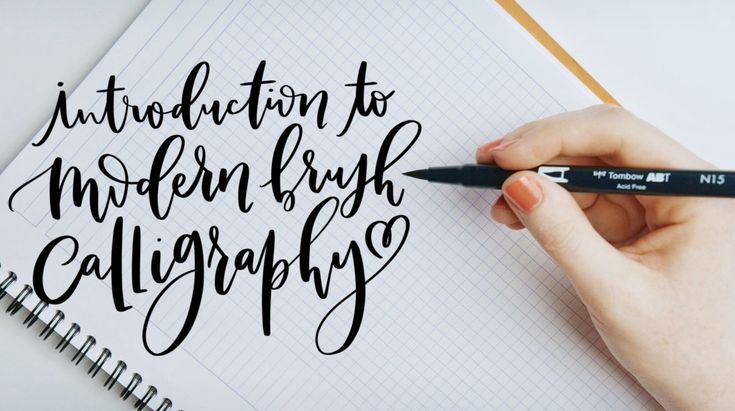 ” And practice is not always the solution.
” And practice is not always the solution.
“The ability to put your thoughts into sentences and paragraphs that others will be able to read and understand is problematic for many children with ADHD,” says Thomas E. Brown, Ph.D., in Attention Deficit Disorder: The Unfocused Mind in Children and Adults (#CommissionsEarned). “Written expression is a more demanding task than talking, reading, or doing basic math computations. To write one’s thoughts places much heavier demands on learned skills and executive functions.” Children with ADHD may also be developmentally delayed in their fine-motor skills — the small muscle movements required in writing.
When the physical act of writing is challenging, it interferes with being able to “show what you know.” It’s not surprising, then, that children with ADHD often hate to write, and resist doing so. When a child encounters such classroom defeat frequently, especially in the early years of schooling, it doesn’t take long for him to get discouraged with academic work, and to develop a sense of inferiority that undermines his attempts to learn.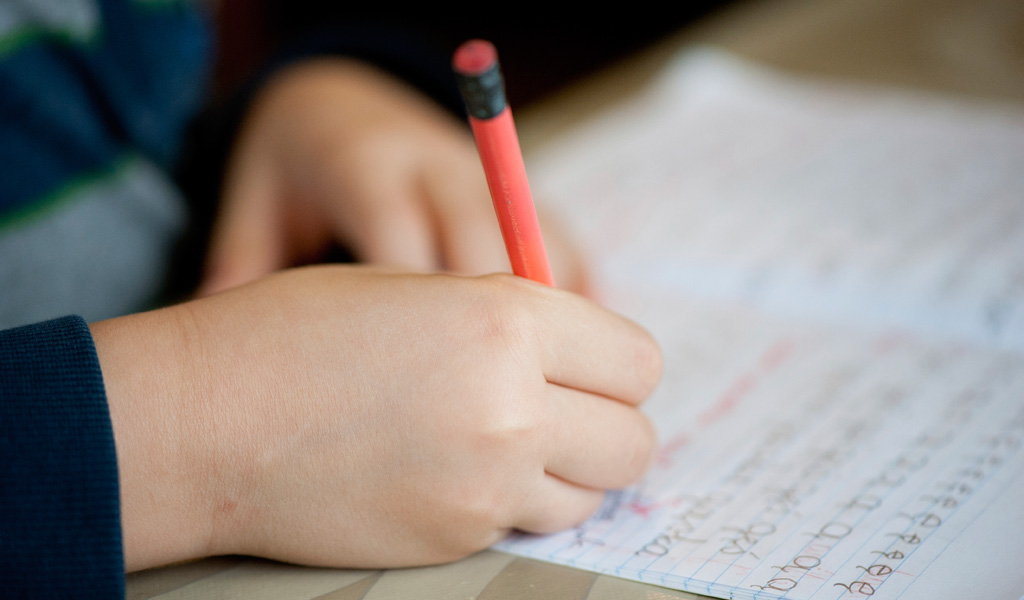
In his book, Brown writes about a young student who, at six, already felt that way: “Shortly before his evaluation for ADHD, a boy in kindergarten was asked by a teacher to try tracing the shape of the letter H. He told his mother, ‘I don’t even want to try doing that. I’m just going to mess it all up like everything else I do.'”
Teachers tell students with ADHD that if they “just practice” and focus more on what they want to say, their writing will come together. That’s akin to watching someone deftly use chopsticks, while you try to pick up a piece of food that keeps falling apart. Sometimes more practice is not what kids need, but “the right practice.” In the early grades, parents can make the difference by improving their child’s handwriting at home. Here are several ways to accomplish that:
[Think Your Child Has Dysgraphia? Take This Test]
Be a scribe for your child. Almost every child I work with resists writing stories, book reports, or factual summaries.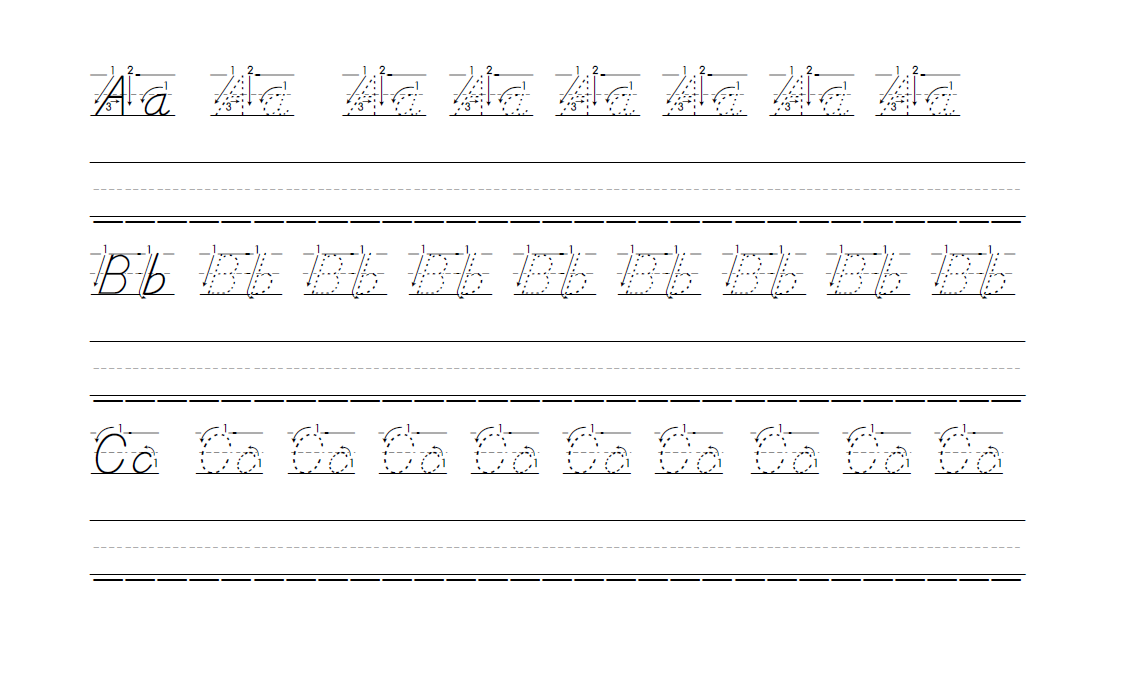 As a result, homework takes hours to complete. To increase your child’s fluency and willingness to write, try this: Have your child talk out an answer, and you write down the first sentence. Your child writes the next sentence, and you switch back and forth. This shortens homework, takes the handwriting load off your child, and forces him to stay focused on thinking about the next sentence.
As a result, homework takes hours to complete. To increase your child’s fluency and willingness to write, try this: Have your child talk out an answer, and you write down the first sentence. Your child writes the next sentence, and you switch back and forth. This shortens homework, takes the handwriting load off your child, and forces him to stay focused on thinking about the next sentence.
Have your child say the words as he writes them. Auditory feedback helps students stay focused and monitor their efforts.
Do letter formation drills (print and cursive). Letters don’t have to be precise and artistic. They should be fairly consistent and readable. So a letter should not float like a balloon, or sink below the line (“into the basement,” as some teachers say). Make sure your child always forms letters from the top, not the bottom.
Use Handwriting Without Tears, a program that includes a workbook and online tools. It works wonders.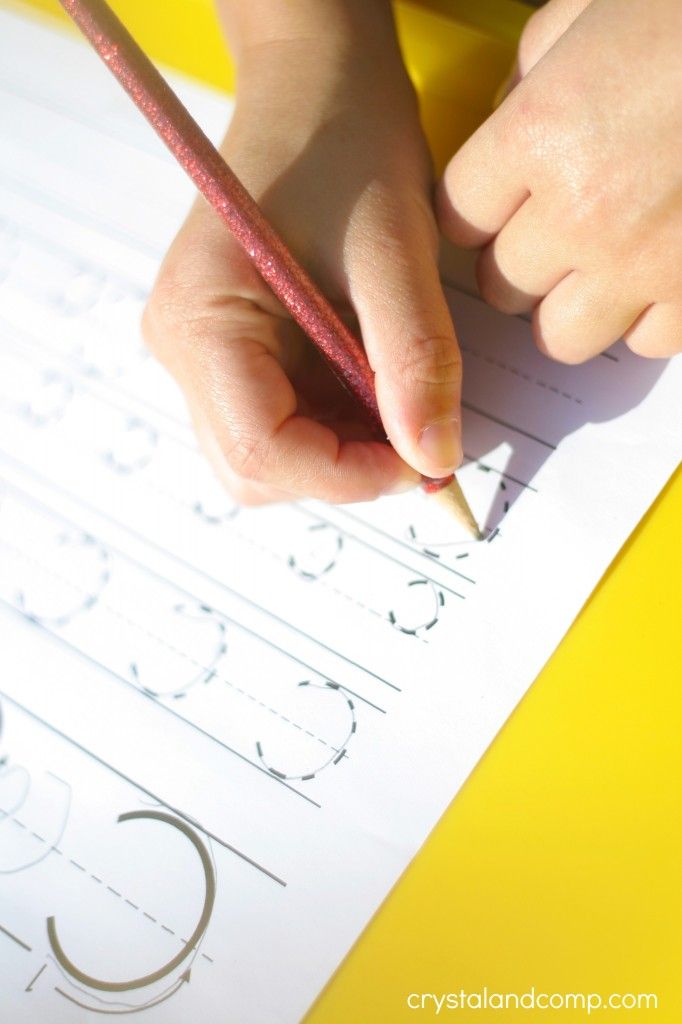
[Click to Read: Lend a Hand with 8 Easy Handwriting Strategies]
Be efficient. Practice letters that are similarly formed (l/t/I; a/c/d; v/w), and work on those that are more frequently used — s, m, r — before he tries those less commonly found in words — j, q, z.
Give verbal instructions about how to form a letter. This especially helps young children improve their handwriting. For example, with the letter B, you can give the following instructions: “Start at the top, straight line down, back to the top, sideways smile, sideways smile.”
Engage in multi-sensory exercises. Ask your child to write in the air, in sand, or on an iPad white board, using his finger. This enables a tactile learner to “feel the letter” and anchors the memory of its shape. These exercises are good warm-ups before starting a longer handwriting session.
To keep your child’s letters inside the lines, have him write on raised-line paper (therapyshoppe. com). Some students can’t tell where the lines are, which slows down their writing. Using sensory-friendly paper speeds up handwriting by letting the child feel where the ruled lines begin.
com). Some students can’t tell where the lines are, which slows down their writing. Using sensory-friendly paper speeds up handwriting by letting the child feel where the ruled lines begin.
Get a good grip on the pencil or pen. There are many kinds of rubber or plastic pencil grips on the market to reinforce the traditional tripod grip. Children with “dagger” or other types of grips need to be shown where their fingers should go. I find the Grotto Grip Pencil Grasp Trainer (pathwaysforlearning.com) to be the most helpful. Designed and tested by occupational therapists, Grotto Grip decreases hand fatigue and pencil pressure. The best thing about the Grotto is that the child can’t cheat: The grip positions a child’s fingers exactly where they should go and keeps them there while he writes.
Building muscle memory in fingers is a trick that many occupational therapists use in improving handwriting. Have your child walk her thumb, index, and middle finger up and down a chopstick, placed on a flat surface, as fast as possible.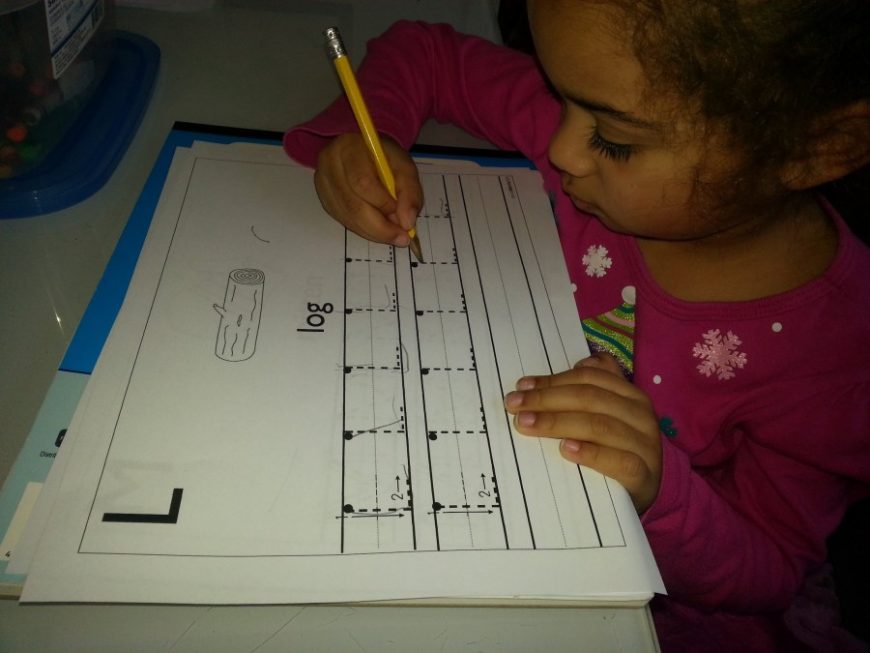 Only the three “grip” fingers should touch the chopstick.
Only the three “grip” fingers should touch the chopstick.
[Read This Next: The Write Apps for Kids with ADHD]
Strength Training for Small Digits
Here are five tips/activities for building fine-motor skills in your kids:
- Squeeze a stress or squish ball
- Build things with small Lego pieces
- Practice buttoning and opening/closing snaps on clothing
- Pick up small objects with tweezers and tongs
- Do jigsaw puzzles
SUPPORT ADDITUDE
Thank you for reading ADDitude. To support our mission of providing ADHD education and support, please consider subscribing. Your readership and support help make our content and outreach possible. Thank you.
#CommissionsEarned As an Amazon Associate, ADDitude earns a commission from qualifying purchases made by ADDitude readers on the affiliate links we share. However, all products linked in the ADDitude Store have been independently selected by our editors and/or recommended by our readers. Prices are accurate and items in stock as of time of publication
Prices are accurate and items in stock as of time of publication
Previous Article Next Article
How to improve a child's handwriting? Methods and exercises
Poor and illegible handwriting in a child can lead to low grades, teachers' dissatisfaction and low self-esteem. If your child has flaws in the letter: too small or too large a font, a strong slope, poorly readable letters, then it is worth working to improve the situation. And it will be great if you do it together.
First, specify the reason for the student's poor handwriting and try to correct this moment:
1 . Incorrect body position: back, arms and legs
If the child writes crookedly, too much of an inclination or diagonally, moving off the line, then look at how he sits. In order to write comfortably and the body is not very tired from sitting at the desk, you need to keep your back straight, both hands should rest on the edge of the table, the brush is straight, the pen or pencil is at an angle of 45 degrees with respect to the notebook.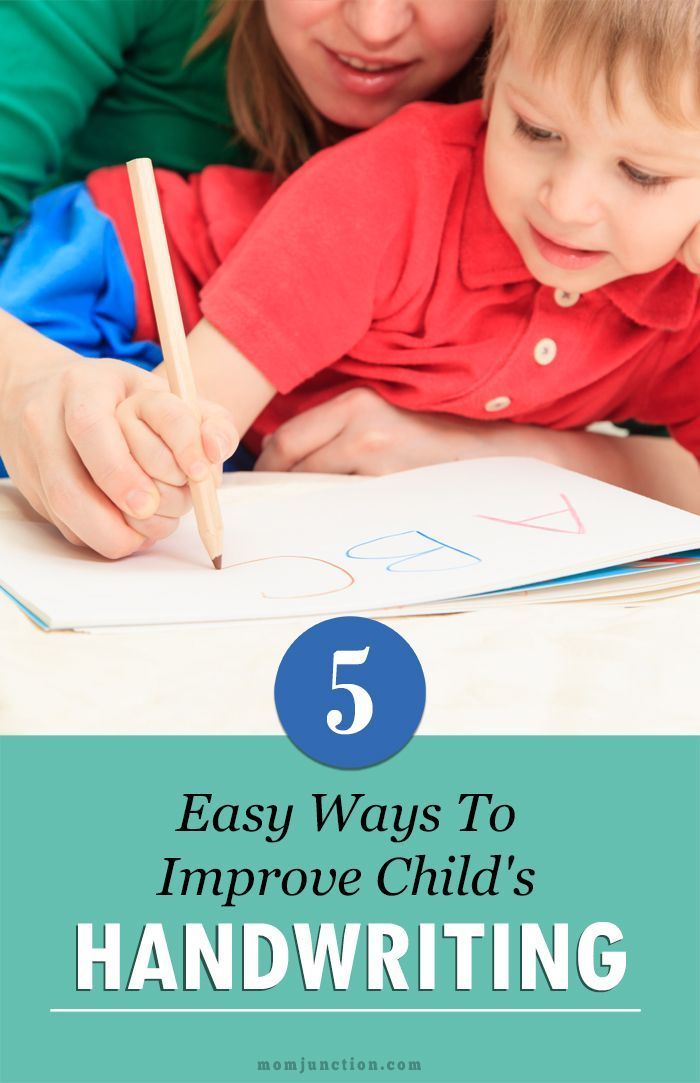
The child does not have to exactly fulfill all the requirements at a time, because the posture for writing is individual for everyone, but at least you need to monitor his posture so that he does not twist his back too much.
2. Insufficiently comfortable workplace and writing materials
If the table is too small or too large, the light falls from the wrong angle (and it should come from the left hand side if the child writes right - and vice versa), the chair is uncomfortable and without a back, and the pen is too thin or thick, then it will be difficult for the child to write beautifully and correctly.
Provide him with a good workplace and comfortable writing materials, and then progress will be noticeable even without additional exercises.
3. Poorly developed fine motor skills
Only exercises for its development will help here. If you see that the letter is difficult for the child in itself and he writes slowly, then try several times a week, but it’s better to do simple exercises with him every day to develop fine motor skills (we’ll talk about them a little later).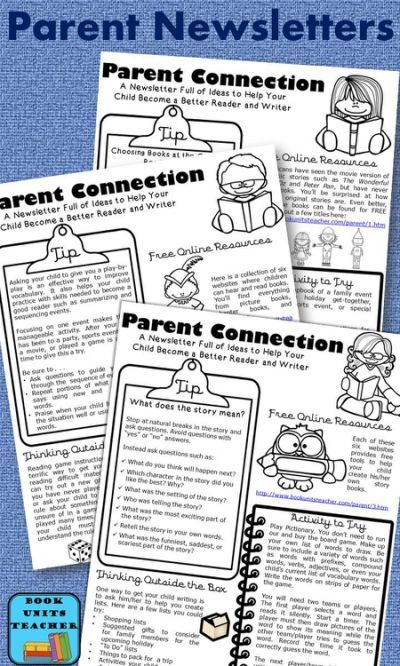
There are other reasons for poor handwriting in a child, but they are more individual.
Now let's see what exercises you can do with a student to improve his handwriting and inspire him. But first of all advice: Praise your child as often as possible and create a friendly atmosphere for learning. Then it will be easier and more interesting for him to try to write well.
Exercises that improve writing technique
Exercises for clarity of writing (to do this, either find on the Internet or buy copybooks and writing samples)
-
Display wavy lines, dashes and other characters. This is the easiest to start with. Let the child draw waves of different lengths and heights on lined paper. Ask him different tasks (show different lines and ask him to copy the images exactly). For this, prescriptions are not needed, only samples.
-
We write the alphabet and connect the letters.
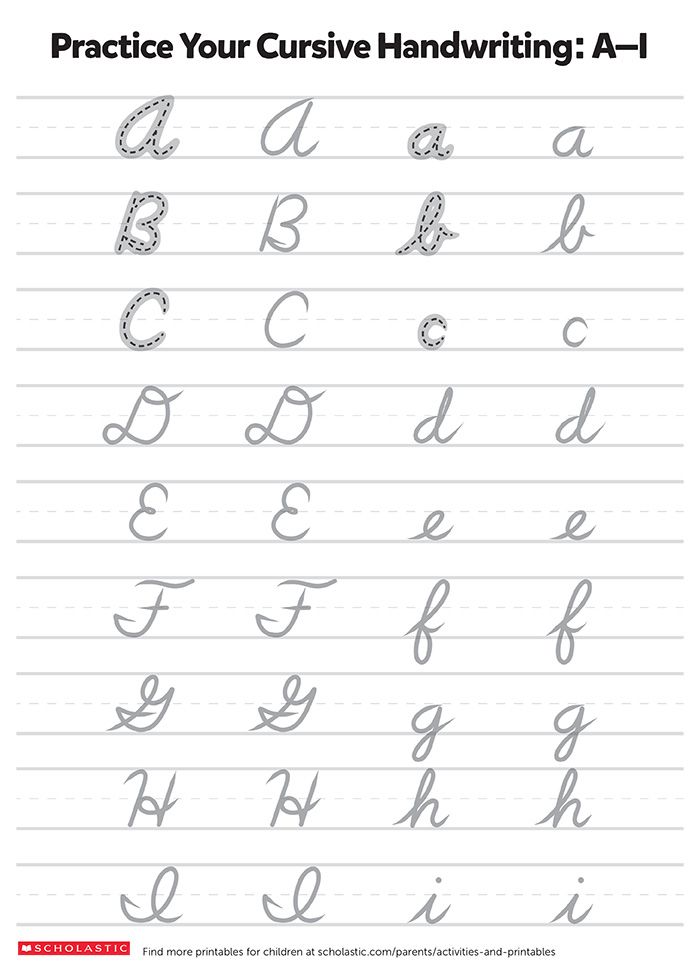 Several times a week, ask your child to write the entire alphabet from beginning to end in uppercase and lowercase letters. So he will better remember how this or that letter is written. Then write combinations of letters with the correct connections. This also needs to be constantly registered several times. The main thing in these trainings is to fill your hand and make the handwriting more clear and understandable.
Several times a week, ask your child to write the entire alphabet from beginning to end in uppercase and lowercase letters. So he will better remember how this or that letter is written. Then write combinations of letters with the correct connections. This also needs to be constantly registered several times. The main thing in these trainings is to fill your hand and make the handwriting more clear and understandable. -
Drawing. Ask your child to draw a house with lots of small windows or a mosaic, anything that needs fine detail. This is not only useful for neat handwriting, but also very interesting. From small details, if you have imagination, you can create entire worlds.
In addition to the usual copywriting, which can get boring quickly, there are more interesting activities to improve handwriting. One of the most beautiful and interesting is calligraphy. Calligraphy is not only a practice of writing, but also creativity, passion, art. See what progress the guys are making on the calligraphy course at IQ007.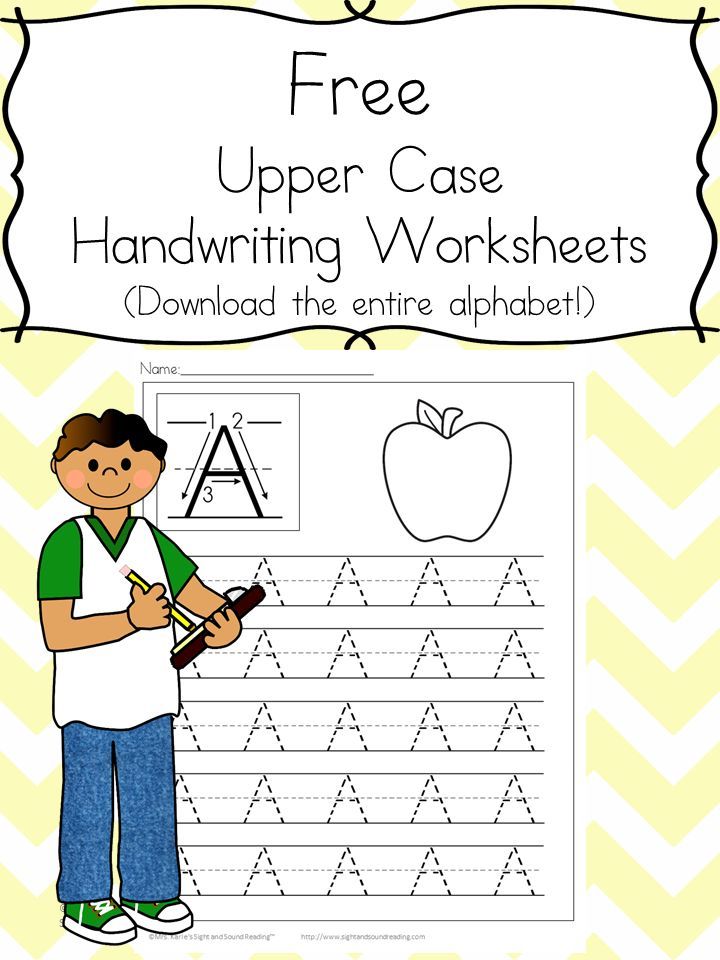
Fine motor exercises
-
Modeling is the best way to do this: from plasticine, clay or salt dough. Let the child sculpt whatever he wants, but control the process and ask for more small details.
-
We sort through the cereals. This is a great way to spice up your child's fingers - give him several types of cereals mixed in one container, and ask him to separate each type. This, by the way, develops not only fine motor skills, but also perseverance, obedience, and the ability to concentrate.
-
Lace. Try with your child to learn how to tie nautical knots or lace up sneakers in different interesting ways. There are many such videos on YouTube.
-
Puzzles and mosaics. Buy a big puzzle and collect it with the whole family. Perfectly develops fine motor skills, and thinking, and imagination.
-
Gymnastics for hands. The familiar rhyme “We wrote, we wrote, our fingers got tired” is not only a sweet memory of the lessons in elementary school, but also a great exercise for relaxing and developing fingers and hands.
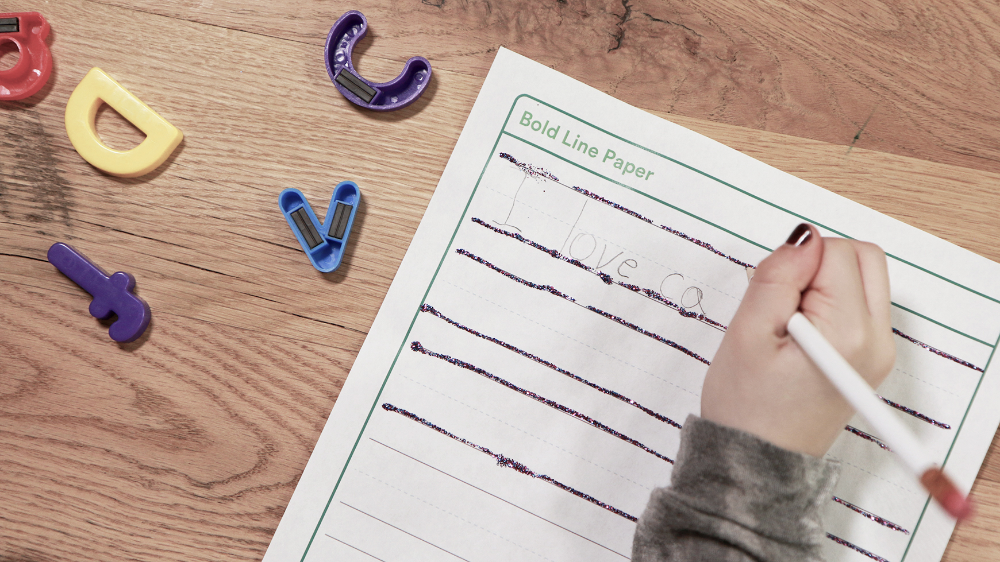 On the first line, you need to alternately squeeze and unclench your fingers. On the second line - rotate the brushes in a circle. And so several times.
On the first line, you need to alternately squeeze and unclench your fingers. On the second line - rotate the brushes in a circle. And so several times.
How to correct a child's handwriting
The child diligently draws letters, but it still turns out “like a chicken paw”? A familiar picture for most parents. What to do? Indeed, from numerous rewritings it only gets worse - the baby gets tired, gets confused, and in the notebook, in addition to scribbles, there is also “daub”!
Contents:
- Such a common problem
- How to help a child?
- What does handwriting depend on?
- Development of graphic skills and speed of writing
- Three conditions for beautiful handwriting
- Exercises to improve handwriting
- Exercise for fingers
Such a common problem as
Loss of motivation in school . A child with poor handwriting writes more slowly than classmates, his hand gets tired faster. He does not have time to write down information for the teacher, gets lost in dictations and therefore writes incorrectly, cannot complete all tasks on written tests and again receives low marks. In addition, he is constantly reproached for scribbles. Not surprisingly, this can knock even a capable child down. And this is not always a symptom of dysgraphia - everything is fixable.
He does not have time to write down information for the teacher, gets lost in dictations and therefore writes incorrectly, cannot complete all tasks on written tests and again receives low marks. In addition, he is constantly reproached for scribbles. Not surprisingly, this can knock even a capable child down. And this is not always a symptom of dysgraphia - everything is fixable.
How to help a child?
The most important thing is to calm down and understand that it is very difficult for the baby now. It's like if you yourself took a pen in your non-working hand (left for right-handers and vice versa) and wrote as many letters as your first grader has to write! Do not force the child to write until "until it turns out beautifully", but switch his attention to interesting games.
And a few more non-obvious tips. For notebooks, buy simple plastic covers: they do not slip on the surface of the table or desk. The beauty of handwriting also depends on the model of the chosen pen.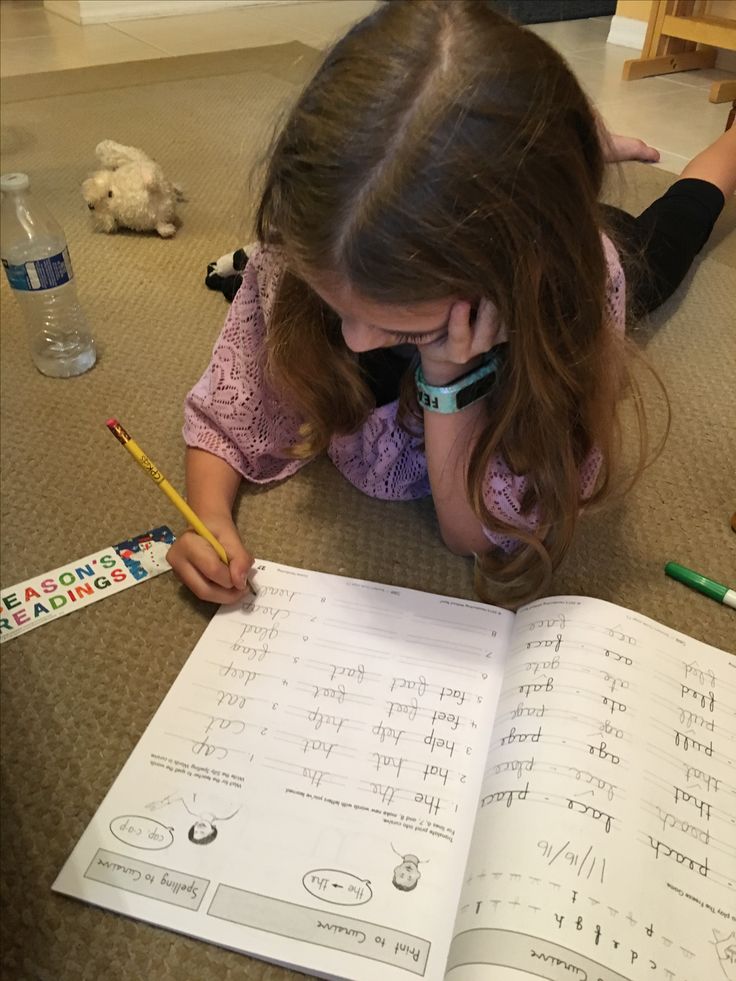 For younger students, very long or very short models, as well as wide ribbed ones, are not suitable. The ideal length of the writing instrument is about 15 cm, and the ink in the core should write easily and not smudge the paper.
For younger students, very long or very short models, as well as wide ribbed ones, are not suitable. The ideal length of the writing instrument is about 15 cm, and the ink in the core should write easily and not smudge the paper.
What does handwriting depend on?
Correct posture when writing is very important. The child should sit exclusively with a straight back and shoulders. He should lean with his back on the back of the chair, and place his feet on the floor or on the footboard, stand, straight, parallel to each other. The "correct" tabletop:
- is located slightly below the level of the student's chest;
- is at least 30 cm from the eyes;
- is at least a palm away from the body (belly).
The workbook should lie on the table at an angle of 10-15°, this makes it easier to move the hand along the line in the direction from left to right. For a right-hander, it is located, leaning to the right, for a left-hander - to the left.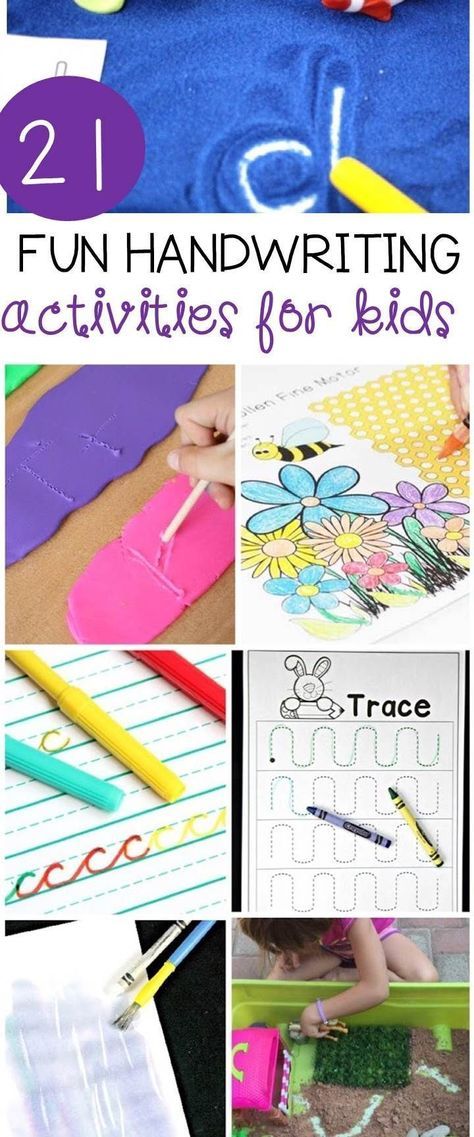 As the sheet fills up, the notebook should be slightly pushed up, and directly while writing it should be supported with a non-working hand: at the beginning of work from below, and after filling the page more than half - from above. The elbow of the writing hand should not hang from the table or desk, the second hand should also lie on the table, creating a comfortable stop.
As the sheet fills up, the notebook should be slightly pushed up, and directly while writing it should be supported with a non-working hand: at the beginning of work from below, and after filling the page more than half - from above. The elbow of the writing hand should not hang from the table or desk, the second hand should also lie on the table, creating a comfortable stop.
Correct handle position is equally important. If the child immediately learns to hold it or a pencil correctly, his hand will not get tired and experience tension. To properly hold the writing instrument, you need to bend your thumb and forefinger, then move your thumb slightly to the side parallel to the table top, while it should not be pressed against the pencil by the phalanx. Make sure the tip of the pencil is pointing straight at your shoulder. The wrist should be on the table.
Formation of graphic skills and writing speed
In order to write beautifully and quickly, a child already in elementary school must be able to correctly select a letter to the dictated sound, write without interruption. This is a graphic skill that not only makes handwriting more enjoyable, but also increases the speed of writing.
This is a graphic skill that not only makes handwriting more enjoyable, but also increases the speed of writing.
The ideal writing speed is considered to be 4-6 words per minute for students in the first and second grades, 12 words in the same period of time for older children in the third and fourth grades.
Three conditions for beautiful handwriting
There are three conditions that make it possible to say that handwriting is beautiful: with tails "like c, f and others, and capital letters should be 2 times higher than lowercase letters;
In addition, you need to correctly make the connection between the letters. It can be "upper" or "lower" and both are considered valid and valid.
Exercises to improve handwriting
Graphic exercises help to develop endurance to stress when writing, correct the baby's handwriting, allowing you to master the accuracy of movements. These workouts are good because the baby perceives them with interest and begins to write more evenly and faster without much effort on his part. Regular classes with a child, at least three times a week, can improve handwriting after a month.
These workouts are good because the baby perceives them with interest and begins to write more evenly and faster without much effort on his part. Regular classes with a child, at least three times a week, can improve handwriting after a month.
For training, you will need simple and colored pencils (felt-tip pens, gel pens) and an album sheet. The most effective exercise is to draw straight, even lines along the wide side of the sheet. When performing exercises, you need to monitor your hand and the correct position of the pencil in it. The exercise is repeated until a satisfactory result is obtained: all lines must be even. To make it more fun for a child to draw the same straight lines, you can do this with pencils of different colors. By the way, it will be easier for the baby to draw the first lines if you put auxiliary points on the sheet. When the lines become even, gradually complicate the exercise, for example, do hatching or draw waves and zigzags.


